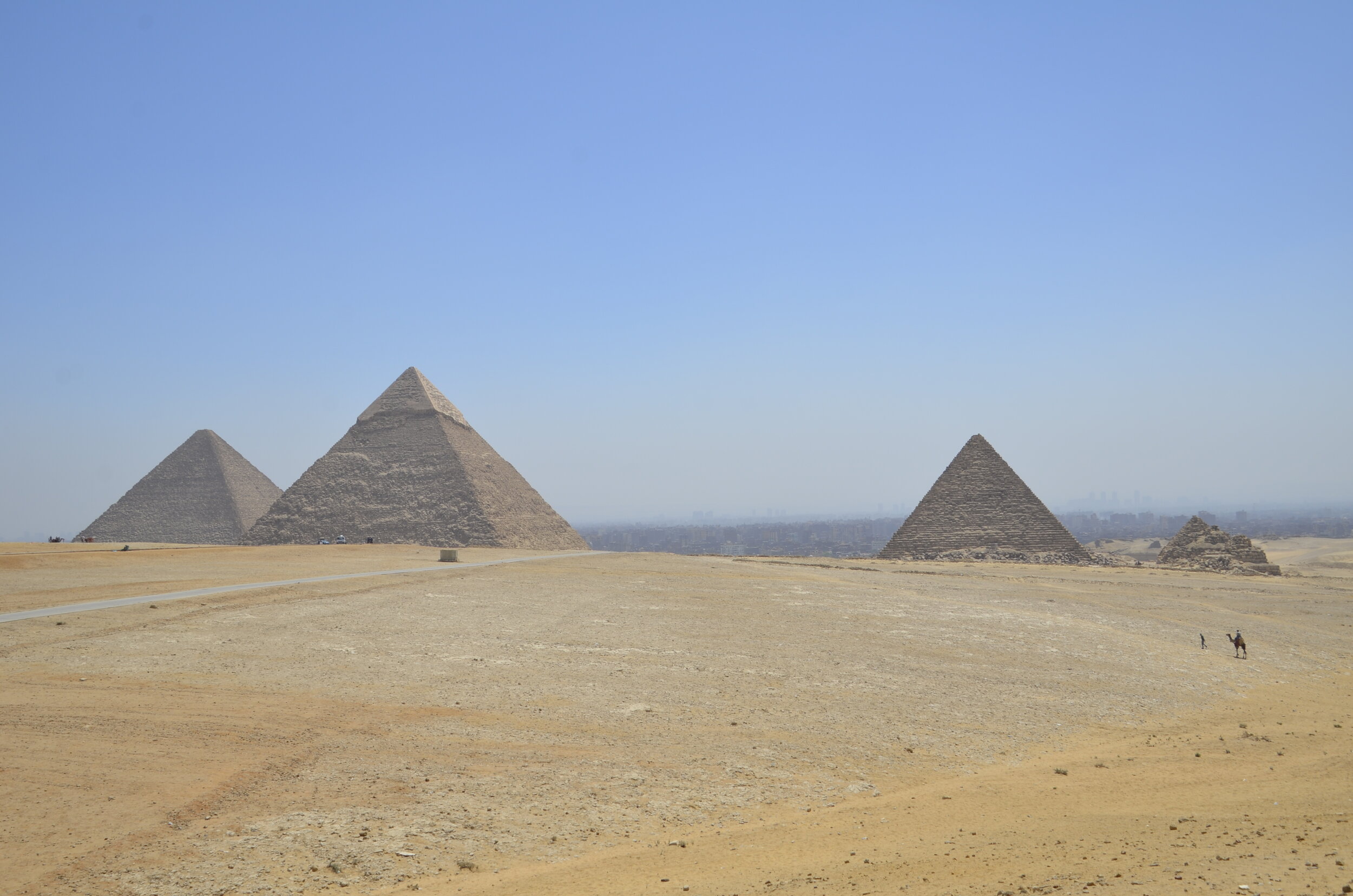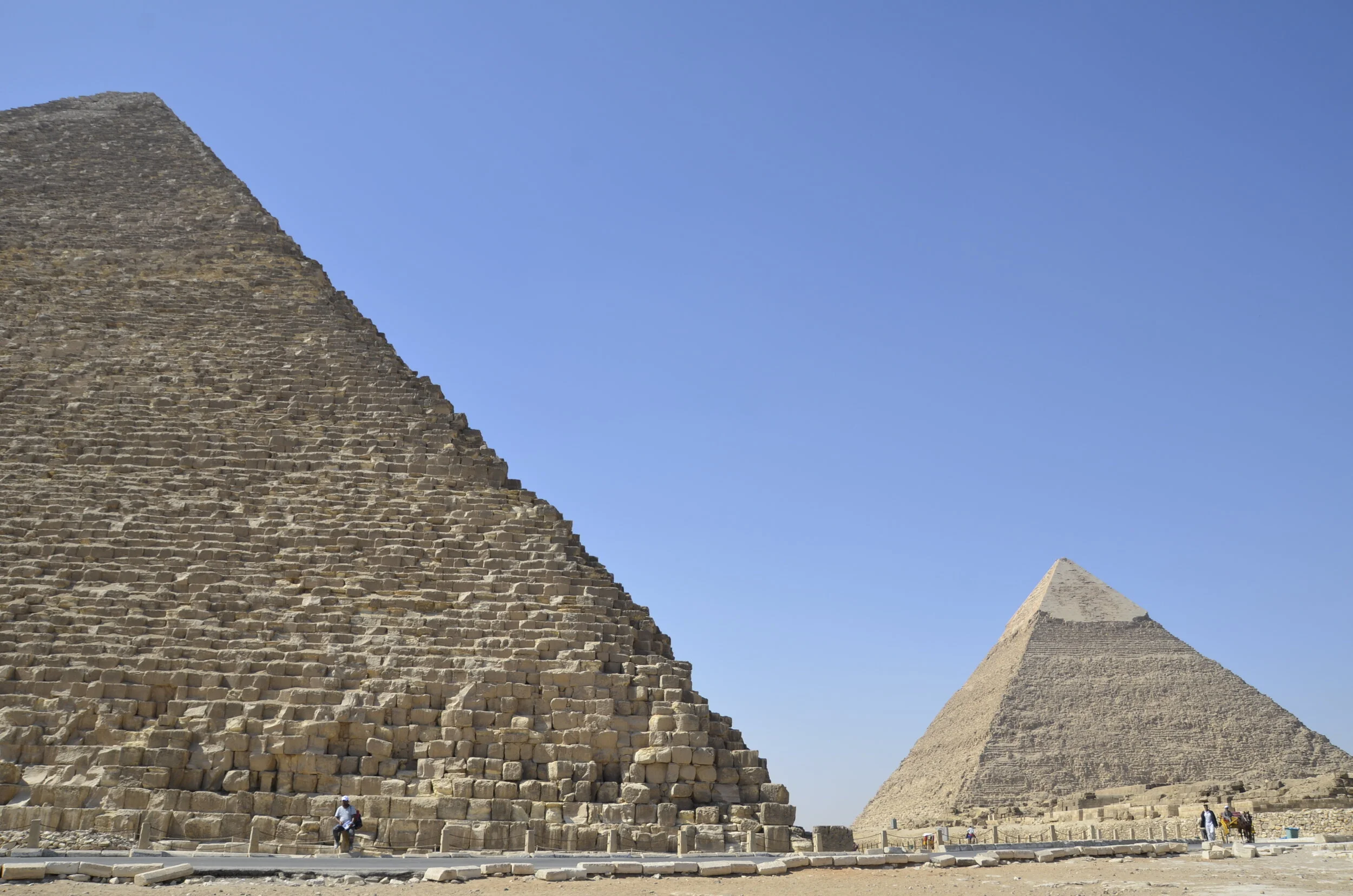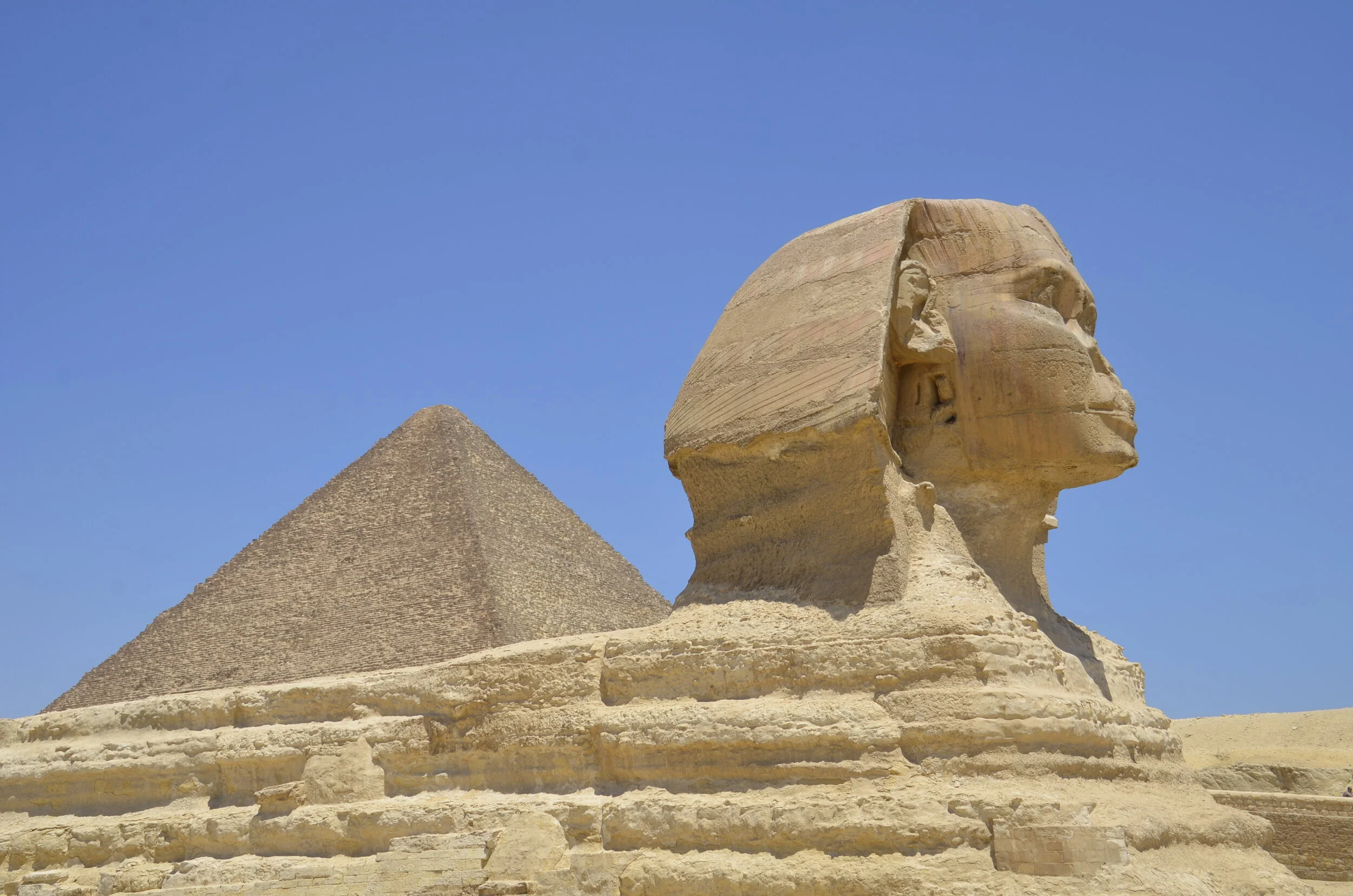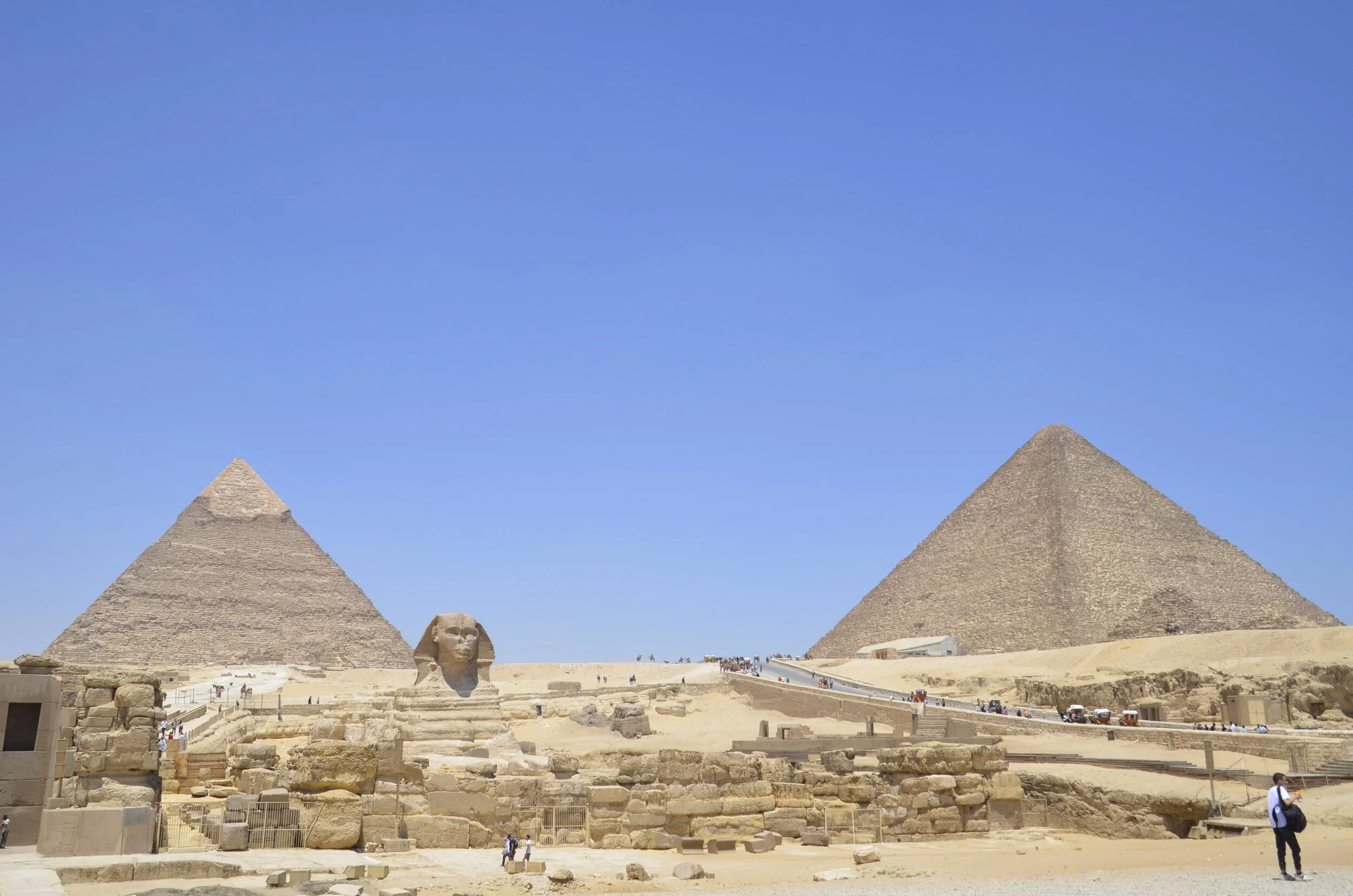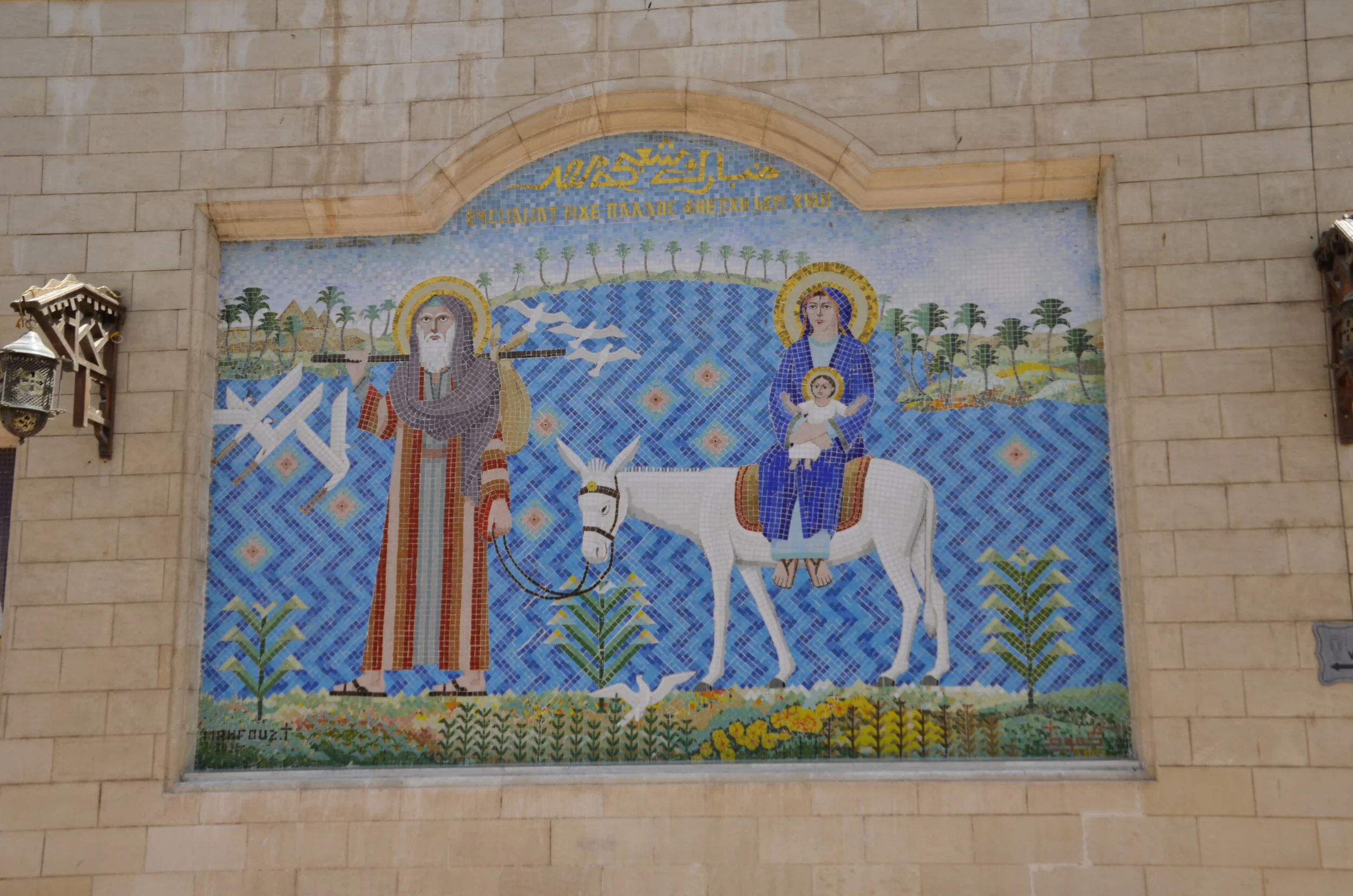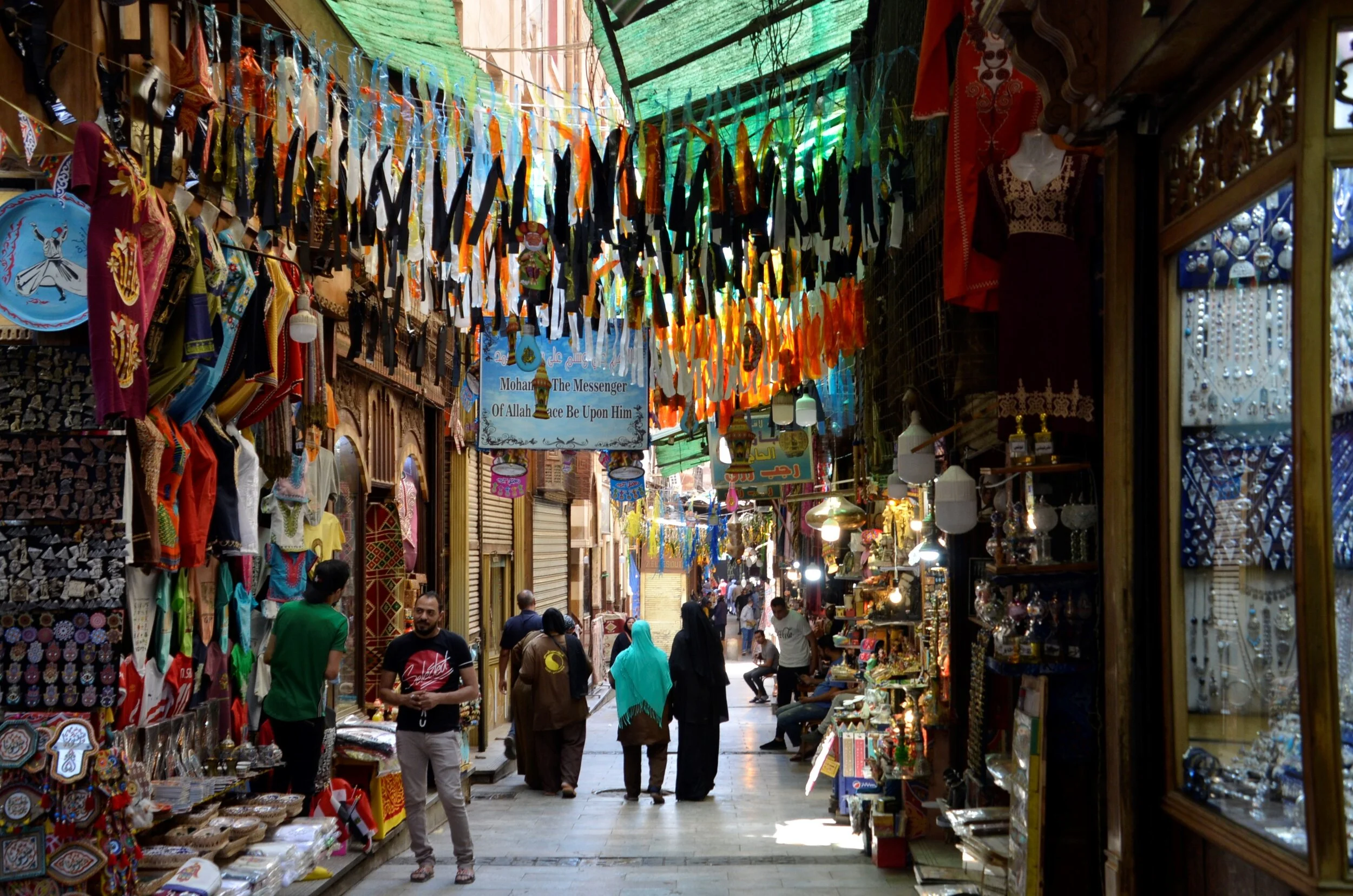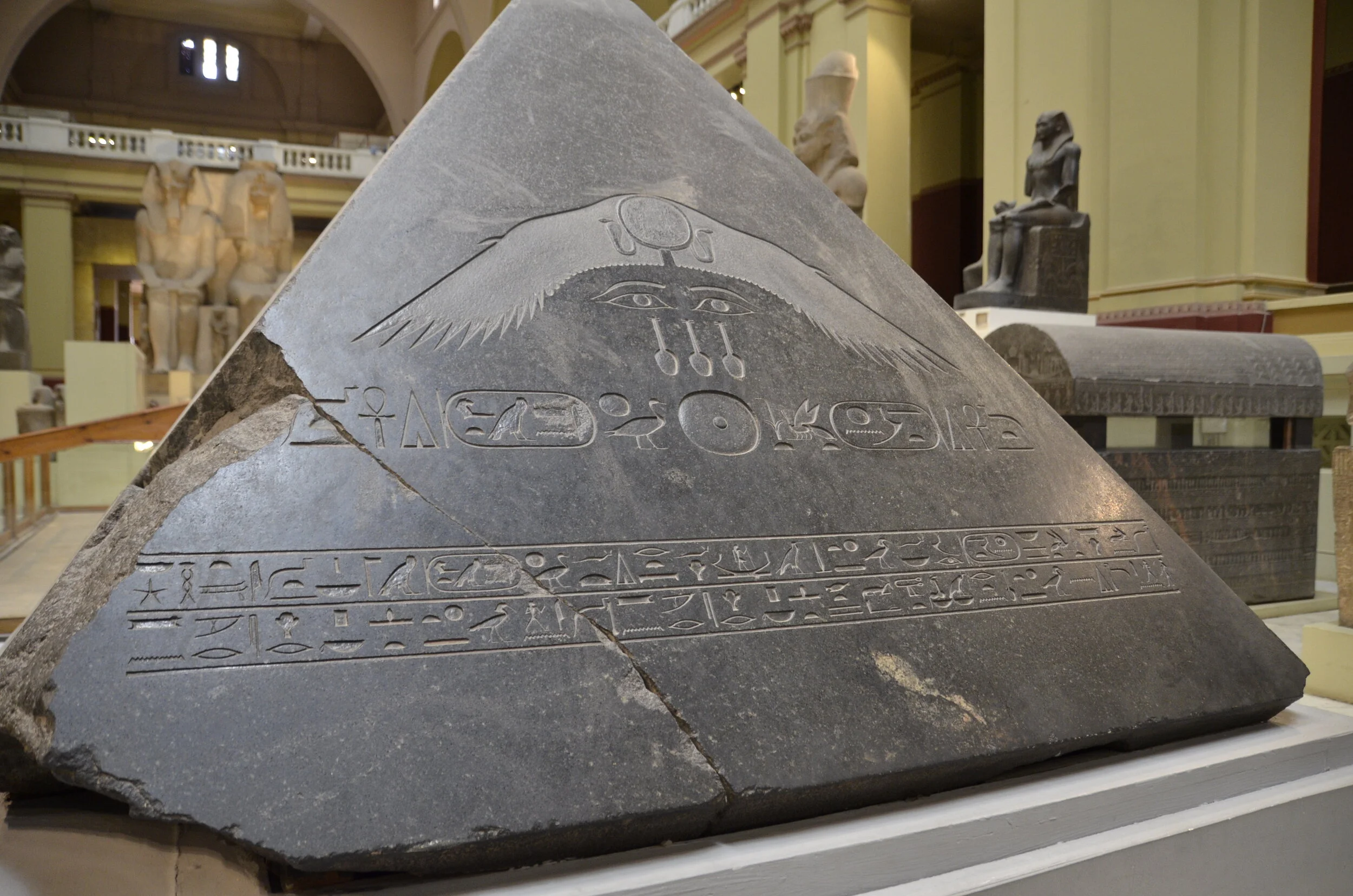Last Egypt post
We spent 2 days in Cairo after leaving the boat on the Nile. I had been really looking forward to seeing the pyramids and Sphinx, as well as touring the 2 big museums in the city. It was interesting to me to see how close Cairo is to these “Wonders of the Ancient World”.
The largest pyramid, the Great Pyramid of Khufu, is the left most one in the picture above and dates to 2700 - 2500 BC (4600 years old!). The center one still has the limestone casing at the top, which all three originally had covering all four sides, to make them shine immensely brightly in the sun.
I don’t know why, but I was just kinda disappointed in how rough the pyramids looked.
We got to go into the middle pyramid, but again, I was unimpressed (I guess since we had seen Luxor and Valley of the Kings). It was a somewhat claustrophobic passageway…
… and the only thing to see was a stone sarcophagus:
The Sphinx was something I have always wanted to see -
… but the reality disappointed, due to all the “stuff” around -
I just wanted the Sphinx and the pyramids with empty desert surrounding them…
We then headed to the Step Pyramid at Saqqara that is the oldest monumental structure ever built -
I’m sorry that I don’t have any people in that enormous courtyard, or against the pyramid for scale.
We then headed to the site of Memphis, which was the ancient capital of Lower Egypt, and were impressed with the colossal granite statue of Ramesses II -
It was originally 30 ft tall, and the anatomic detail was amazing -
Now here was a sphinx I could really appreciate. It is one of the largest monuments made from alabaster.
Before I relate our last day in Cairo, I don’t want to forget to mention our first day in Cairo, before we even went to Jordan. We took a tour of “Coptic Cairo”, checking out the Old City and a number of the churches in the area.
The “Hanging Church” is called that because it was built over a Roman fortress and is one of the oldest churches in Egypt. It was built about 690 AD and has some gorgeous mosaics on the walls of the courtyard leading to it -
It happened to be Good Friday in the Greek Orthodox liturgical calendar, so we couldn’t go in most of the churches due to services being held. However, The Church of St George…
… was open…
… so we could peek in and marvel at the beauty -
Now, for some pictures of daily life in Cairo.
I couldn’t get all those stalls, as well as the tuk-tuks, donkey drawn carts, and tons of cars and pedestrians, into one picture.
The Old City Bazaar was filled with people in all manner of dress, and shops with an amazing variety of “stuff”.
So, I’ll finally end with our last day in Cairo, that we spent at The Egyptian Museum, and the National Museum of Egyptian Civilization. The former felt like a garage sale or attic of a hoarding grandparent. The building was simply enormous and stuffed, almost haphazardly, with innumerable objects that were centuries and millennia-old.
These were delicately carved canopic jars of alabaster, for the bodily organs of King Tut.
And these are more examples of amazing alabaster carvings -
The lapis lazuli on this golden mask really caught my eye:
There was a room of “King Tut’s Treasures” that were beautiful in both their handiwork and the materials used, but alas, no pictures were allowed.
This was a granite capstone from one of the pyramids:
The National Museum of Egyptian Civilization was where the recent “Parade of Mummies” ended, to exhibit them in a better home than the older Egyptian Museum. In early April this year, 22 mummies were paraded through the streets of Cairo, with a lot of pomp and circumstance. The exhibit hall was very nice and it was interesting to see the actual mummies, and read their history. Again, unfortunately, pictures were not allowed.
I kept being drawn to alabaster statuary -
This is a hint of what had been in Tut’s tomb -
Ok. Enough museum stuff.
At times, I was pinching myself, saying, “yeah, we’re really here!”
